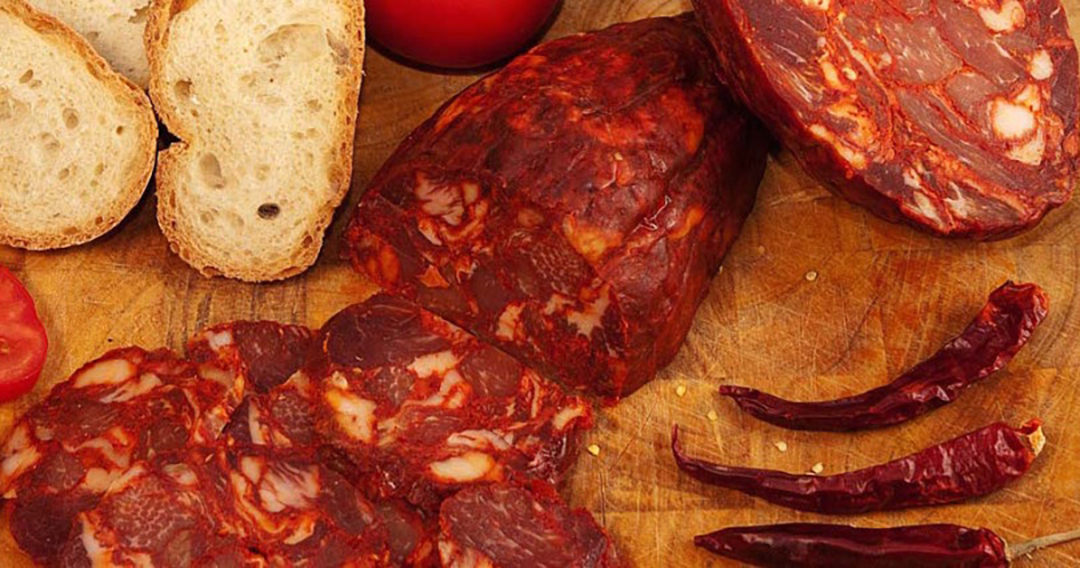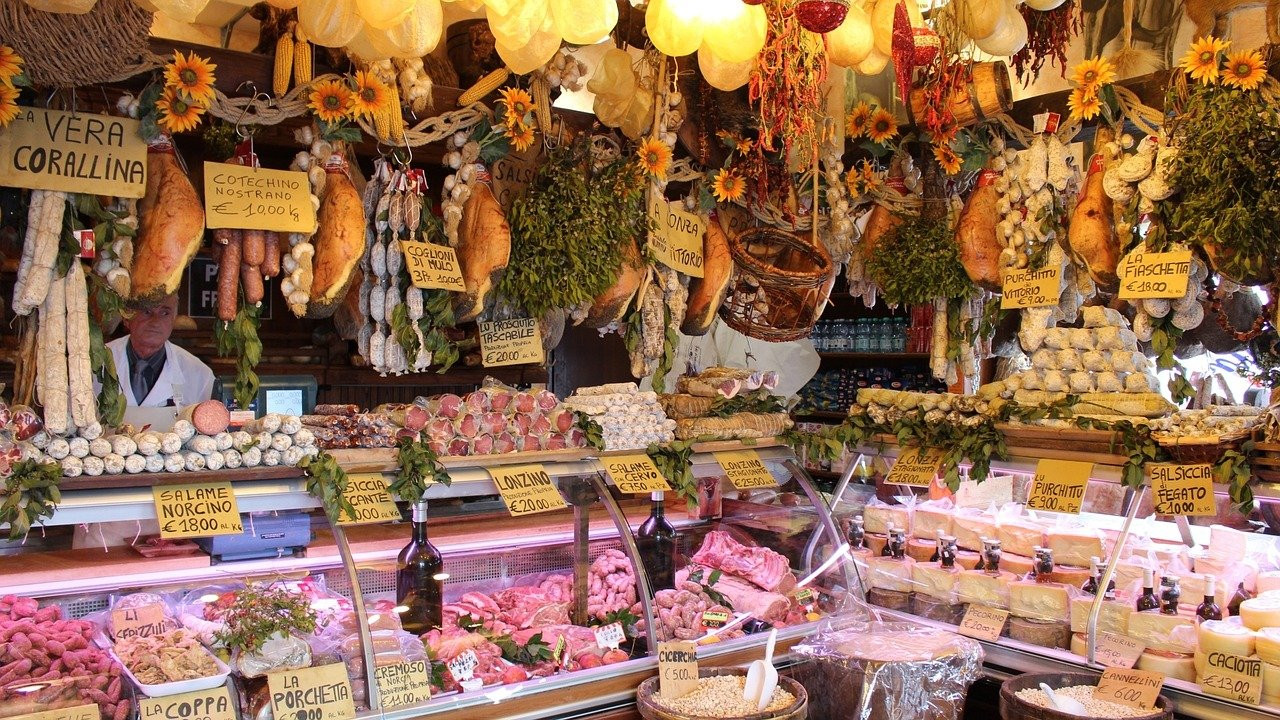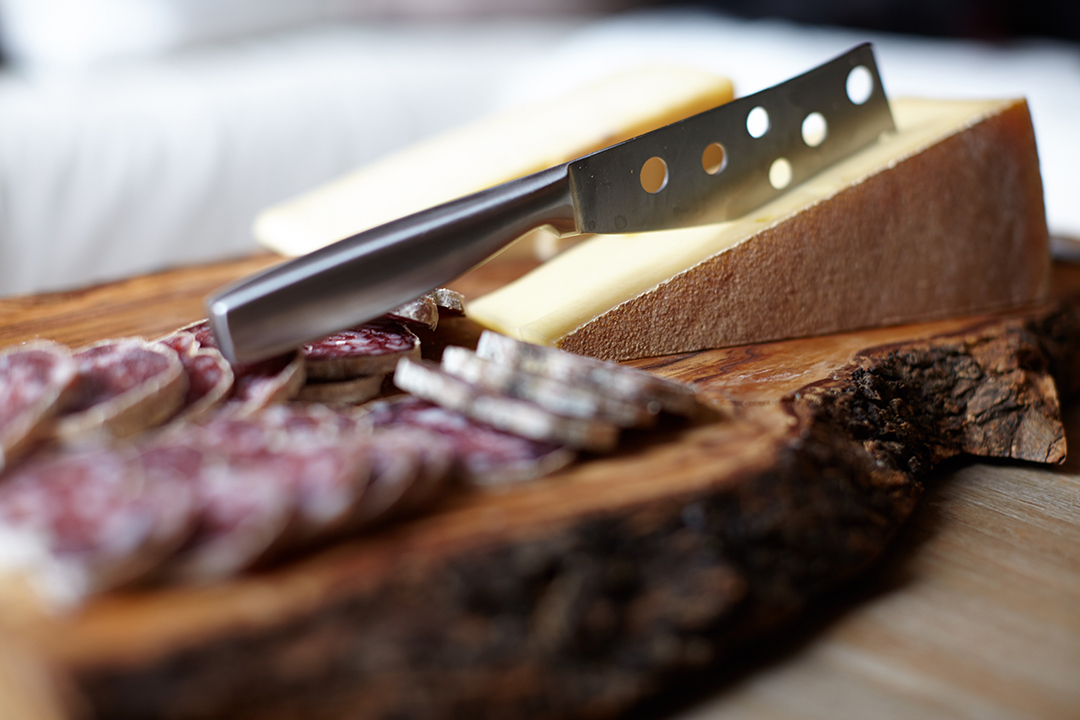Red like a pleasantly spicy pepper chilli pepper. A coarsely chopped mixture of meat and spices. A unique flavour. It’s the most prized Italian cold cut and knowing how to make it is not for everyone. Unknown to most Italians. Even a master in the art may end up with a disappointing outcome. Would you like to find out more about this award-winning, top-quality cured meat full of flavour, mostly unknown even in Italy?
 What is the Ventricina?
What is the Ventricina?There’s a strip of land in central Italy, along the eastern coast, in the remote regions of Abruzzo and Molise, inhabited by men who have been able to transform pork meat into something extraordinary. By working the fat into the noble cuts of pork, adding finely chopped dried pepper and other spices you obtain a mixture ready to be stuffed and matured. At the end of this process, a mouth-watering salami is created. It is known as
Ventricina.
Traditionally stuffed in the stomach or bladder of the pig (which give the end product its distinctive oval shape), the Ventricina is included in a special list of Italian produce, selected for the unique techniques used in their production, which need to be protected from industrialisation in order to remain authentic. Once it was a salami widely produced for
special occasions and was offered at weddings or to honour important figures, which in a small community may have been the mayor or the town doctor. As time passed, it suffered competition from new products, industrially made and distributed in supermarkets. It seriously risked to disappear completely. After all, creating this work of art is not at all an easy, cheap or quick process.
All in all, it’s simply not a product adapted to modern production methods. Moreover, achieving it without the use of preservatives, nitrates and nitrites is particularly difficult, because just a small detail like a little air in the casing or a change in temperature could spoil the meat. They say two sausages out of three are thrown out because of something going wrong in the process. This doesn’t help the butcher to produce copious quantities fast enough for the large-scale distribution of supermarkets. And this explains why this cold cut remains unknown to most Italians. On the other hand, in recent years the Ventricina has been at the forefront of a wonderful movement to preserve traditional and artisan produce, thanks also to its unique flavour. So if you are lucky enough to find it, make sure you savour the whole history and its unbelievable taste, both carefully preserved in its homeland.
 How to make it properly
How to make it properlyAccording to the specifications, the
authentic Ventricina is made with the
lean cuts of the pig such as the thigh, loin and shoulder which are finely diced with a knife, rather than minced which is the method normally used for salamis. Fat, which has also been delicately cut into even smaller cubes, is added. After leaving it to rest overnight minutely chopped, dried sweet pepper joins in. The pepper used is a local variety which isn’t found anywhere else and gives the salami it’s characteristic fiery colour and distinctive aroma. The paste is then seasoned with both the flowers and seeds of fennel, salt and pepper. This is the most common recipe. However, there are many variations which we will tell you about shortly.
This mixture is carefully stuffed in natural casings, preferably the stomach or the bladder, preprepared for ageing. The sausage is not smoked, but fermented, dry-cured at 6°C/42°F for the first 4-5 days and then at a higher temperature, around 13°C/55°F, for at least another hundred days. At a certain stage in the ageing process, a layer of lard is spread over the sausages to better preserve them, protecting them from mould, sudden changes in temperature and insects. This step also limits the typical weight loss of maturing salamis.
A hand-crafted product with a long-standing tradition allows for many tasty regional varieties, which derive from variations in the ingredients and processes used. Let’s have a look at a few!
Tasty variationsIn the mountainous region to the west of the town of Vasto, you can find our favourite variation, which traditionally was made only with the meat of the black pig: the finest, similar to the perna negra found in Spain. To begin with, the sausages are dry-cured in a room warmed up by a fireplace. After this initial phase, they are moved to a cool place and, during the third month, covered in a layer of lard. They will only be ready to consume after seven or eight months and the long ageing period gives the salami a peculiar taste and texture. It has a vibrant red, almost orange, colour and even the sweet version is quite spicy. When tasting it, you may be able to pick up citrus notes as some farmers traditionally immerse the bladder casings in water infused with oranges and lemons.
A little further south, we have the Ventricina from
Montenero di Bisaccia, made from pigs exclusively fed on grains and pulses and using only the meat from the thigh and the hard fat. They produce both a sweet version and a spicy one, obtained by adding chillies. This variety requires the longest maturation time, lasting at least a year and a half.
On the other hand, a little north from here, in the area surrounding the beautiful old town of
Teramo, producers mince the meat and add an equal amount of fat resulting in a softer filling. The
Ventricina sausages here are seasoned with garlic, rosemary and orange peel. The ageing is brief and after just a few weeks the product is ready to be eaten. The consistency is so spreadable that it is often preserved in jars.
 Shall we slice?
Shall we slice?Ideally, you should try the
Ventricina just as it is, cut in generous slices, perhaps accompanied by a pleasant red wine full of character from the region. For example, a good Montepulciano d’Abruzzo! Nonetheless, it’s also great in a sandwich and locals often use it to accompany pasta either adding it to bolonaise, or in large chunks to tomato sauce, or simply on its own.


